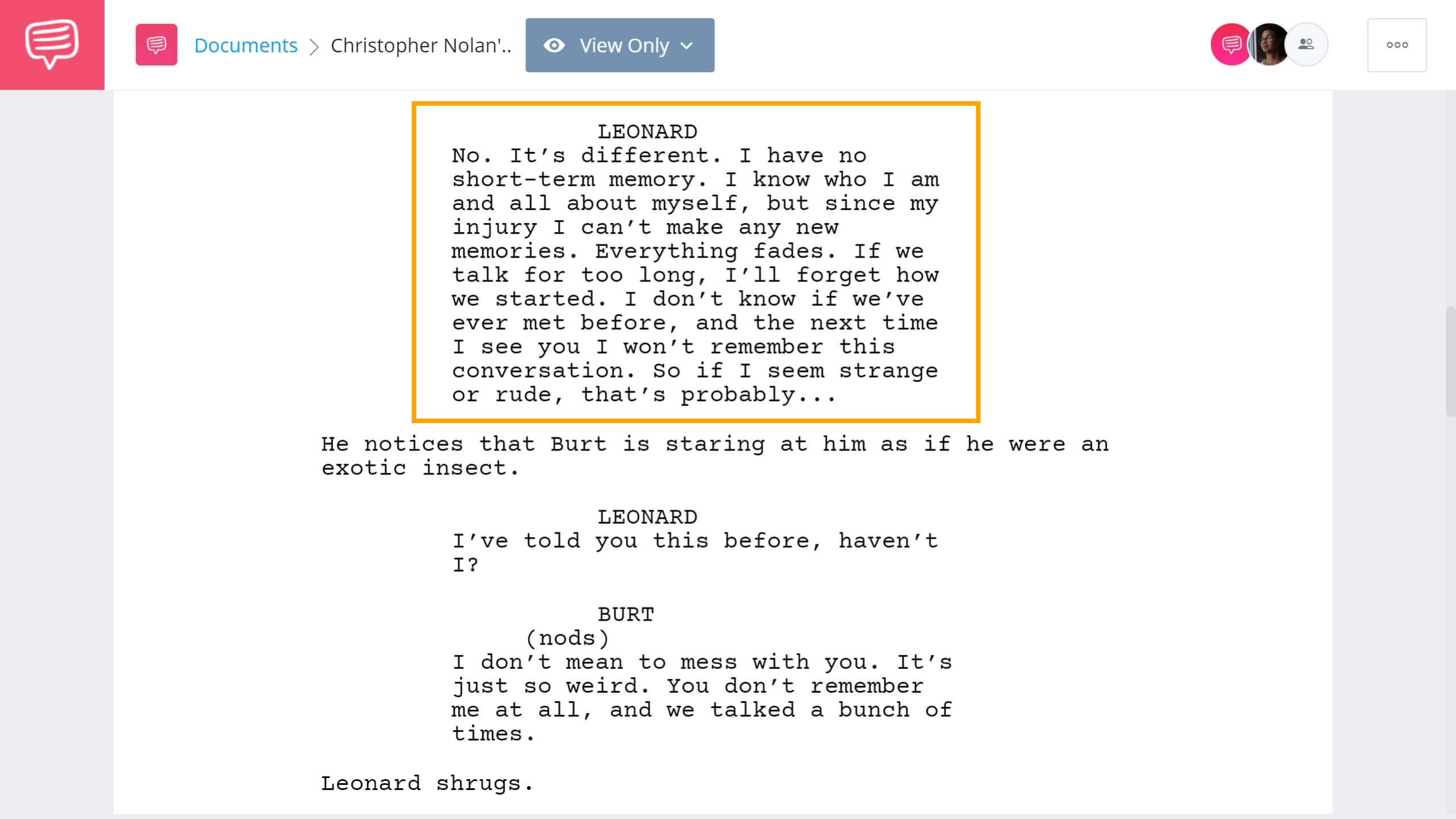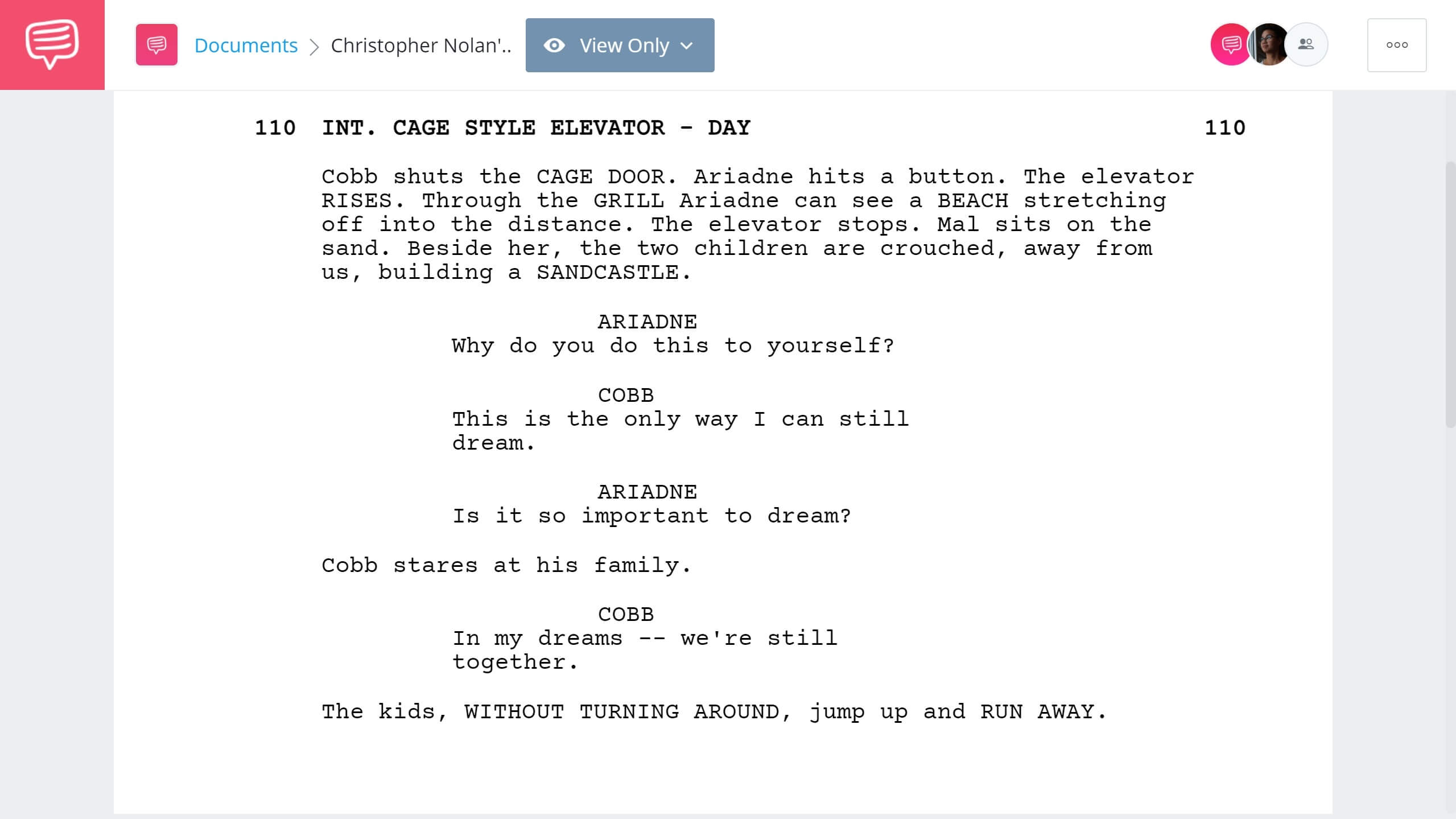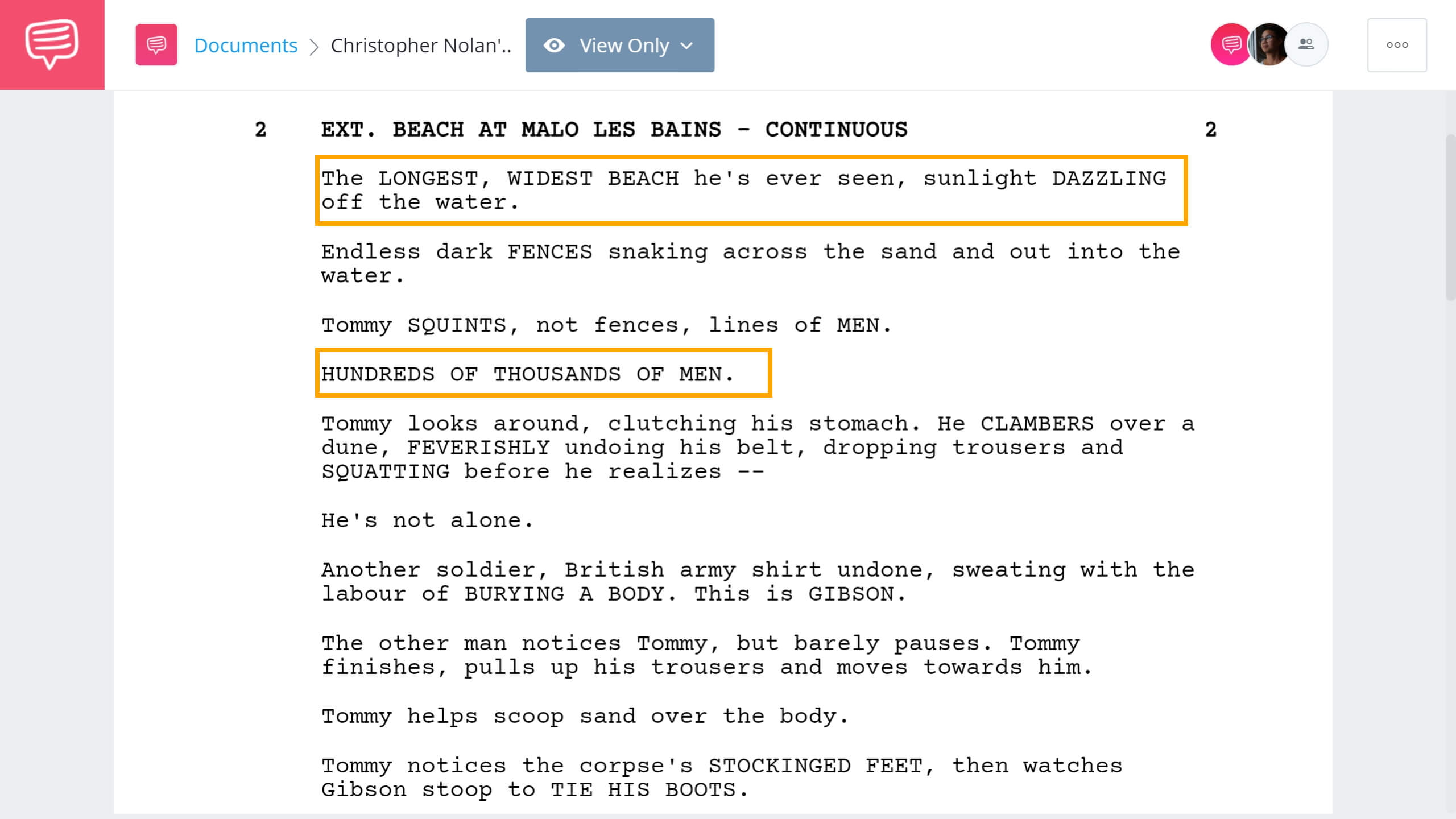Christopher Nolan is one of the most revered directors of the 21st century, known for his cerebral blockbusters like Inception and The Dark Knight. Much is made of his striking visual style and expert direction, but his work as a screenwriter is equally important to his career success. While Nolan’s cinematic subjects are far ranging—from sci-fi epic to revenge thriller to war drama—there are many common themes and tools that he uses time and time again. Let’s look at the Christopher Nolan writing process and what every writer should take away from it.
Christopher Nolan Script Writing
Use non-linear timelines
Part of what makes Christopher Nolan such an exciting filmmaker is that he uses every aspect of cinema to his storytelling advantage. Of course, in real life time is linear, but in film, with the right use of editing and form, it doesn’t have to be. Again and again, Nolan uses this to his advantage, crafting narratives that don’t adhere to normal temporal procession.
This nonlinear plotting can be used toward a multitude of ends: flashbacks for dramatic reveals, flashforwards to build anticipation or plant Red Herrings. He uses jumps in time to subvert expectations, reversing time to put information in context — the list goes on and on.
Perhaps the most blatant use of temporal manipulation in the Christopher Nolan writing process can be found in Memento. Memento is a story told almost entirely backwards: we begin with our protagonist murdering a man, and then we work our way back to how he got into that position.
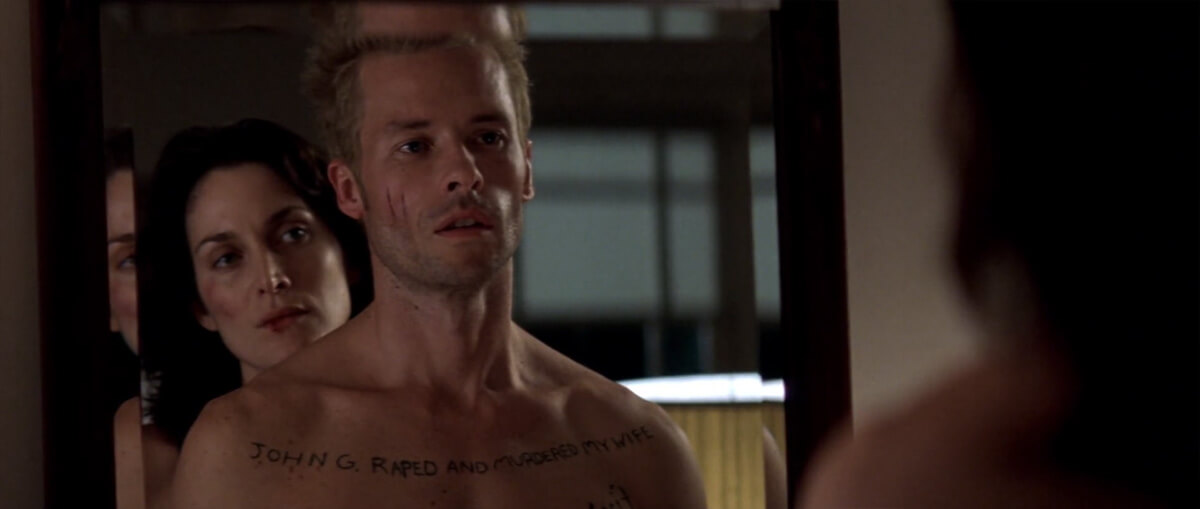
The Memento script works backwards
Memento was Nolan’s second film, and contains all of the techniques that would become his calling card as one of the biggest directors in Hollywood. Here, the manipulation of time affords Nolan the ability to create a masterful and mind-bending twist that, quite simply, would not have been a twist if the story had been told front-to-back.
It’s a genius approach to the nature of storytelling: any story is a mystery if you start with the end. Here’s Nolan on why he approached the film the way he did.
The Christopher Nolan writing process for Memento
This video contains the first major takeaway for any screenwriter hoping to write non-linear stories. Nolan doesn’t manipulate time simply because it’s cool; he tells the story in reverse because it’s necessary to see the story through the protagonist’s eyes, without any short term memory. The audience only knows what Leonard knows at any given time.
To pull this off, it is key to have a tight storyline and a clear set of rules. Manipulating time is inherently disorienting for an audience (after all, we all live in a linear temporality). And so when using the tool, it’s important to avoid as much confusion as possible.
Let’s take a look at this early section from Christopher Nolan’s Memento script, which we imported into StudioBinder’s screenwriting software.
Memento script PDF • Read the Scene
Here we can see Nolan not only explaining Leonard’s condition, but also how the entire story will be constructed.
First, Leonard explicitly says how his memory works: “I have no short-term memory. I know who I am and all about myself, but since my injury I can’t make any new memories. Everything fades. If we talk for too long, I’ll forget how we started.”
This is pretty blatant exposition, but Nolan makes it a little more interesting by having this be the second time Leonards explained it to Burt. It’s key information for the audience — if we don’t know this, we don’t understand any of the film. So, pure exposition is called for.
Nolan takes the explanation a step further. Let’s look at Burt’s response: “That must suck. All... backwards… you gotta pretty good idea of what you’re gonna do next, but no idea what you just did.” This is a summary of Leonard’s condition, but furthermore, it’s an outline of how the story will be told.
How to write like Christopher Nolan • Memento
As an audience, we have a good idea of what’s going to happen next, and we have no idea what’s come before each scene. Indeed, it’s all backwards.
There aren’t many instances where you’ll see characters describe the structure of a movie in which they’re set, but for a film as narratively complex as Memento, it’s necessary.
This type of clarity is hugely important to the mainstream success of Nolan’s films. While almost all of his movies are nonlinear and structurally complicated, Nolan goes to great lengths to ensure that the audience knows what’s going on.
This clarity can be obtained in something as simple as setting. Take the screenplay for Inception, one of Nolan’s higher concept films.
In an interview, he explained how he would differentiate between the different dream levels:
I told [the studio executives] one of the dream levels is in the rain, one of them is a night interior, one is outdoors in the snow. That meant that even in a close-up, you would be able to tell which level you were in as you cross-cut.
— Christopher Nolan
So, exposition isn’t the only way to keep things clear for an audience. Nolan, before even writing the script, knew the dream levels in Inception would need to take place in very different, distinct locations. If he hadn’t done this, no amount of exposition would have saved us from being lost from scene to scene.
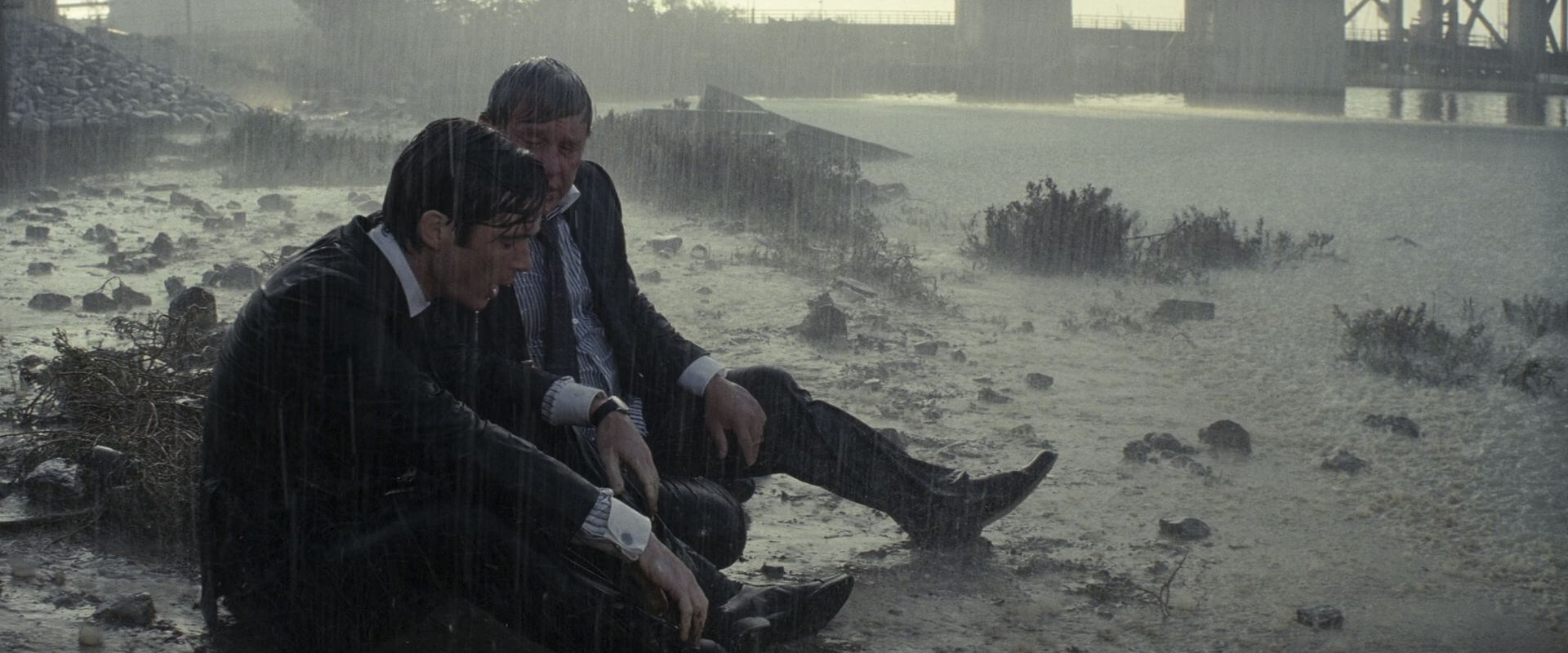
Nolan, who wrote Inception, had the audience in mind
While Christopher Nolan provides a great blueprint for how to do temporal shifts and manipulations effectively, he can also provide a cautionary tale. His latest film, Tenet, is a prime example of what can happen when a writer gets out over his skis.
Unlike in Inception or Memento, where the rules of the game are clear, Tenet’s temporal shifts are often muddled and confusing.
The result? A visually stunning movie that doesn’t make much sense, one of Nolan’s lowest-rated efforts.
Read the complete Tenet screenplay.
Christopher Nolan Writing Process
Embrace genre
Christopher Nolan’s films often feel singular: is there any other movie like Inception? Is there another superhero movie quite like The Dark Knight? But this doesn’t mean that Nolan is pulling these films out of a vacuum.
In fact, Christopher Nolan’s best movies are often very loyal to the movie genres they belong to.
This video, among other things, shows just how much the writer/director thinks in terms of genre:
Christopher Nolan writing process, explained
His second lesson in this clip, “figure out what is interesting to you and present it in a way that it will be interesting to the audience,” highlights exactly why Nolan likes to tie himself so closely to conventional genre categories.
Christopher Nolan is a filmmaker with a lot of lofty and complex ideas, but he’s also a blockbuster filmmaker, making movies that appeal to the masses.
These two things don’t have to be at odds, and that’s where this adherence to genre comes in.
By rooting his big ideas to tried and true genre tropes, Nolan is able to investigate what he’s interested in while also creating something accessible to most moviegoers. This is how Nolan is able to create works that are simultaneously singular and familiar.
Equally important, however, is that Nolan doesn’t always choose the obvious genre for each topic he’s investigating. Take The Dark Knight for example. The obvious genre choice for a Batman movie would be, you guessed it, the superhero genre. But Nolan instead opts for a film noir — this is a crime film, a film about cops (Batman, Gordon) and robbers (the Joker).

Christopher Nolan script structure follows genre convention
The Dark Knight is massively indebted to neo-noirs like Michael Mann’s Heat, the structure of which The Dark Knight is a one-to-one replica. But because Nolan used noir in a new superhero context, the film felt like a breath of fresh air. By strictly adhering to noir rules, Nolan was able to look at larger philosophical ideas like the nature of good and evil while remaining grounded in a conventional form.
In this video, outlining how Nolan approached writing The Dark Knight, you can hear Nolan’s noir framing in every detail of the story (deeply detailed antagonist, flawed protagonist, and so on):
How to write like Christopher Nolan
We can see this strategy — situating familiar genres in unfamiliar contexts — over and over again in Nolan films. Inception? For all it’s dream leaps and high concepts, it’s a straight-ahead heist movie. Tenet? Convoluted, sure, but it’s a classic spy film. The Dark Knight Rises? A war film.
Adhering to genre doesn’t mean you’re making something unoriginal — in fact, use it in the right way, and you might do the exact opposite.
Related Posts
Christopher Nolan Writing Process
Make your protagonist insatiable
Perhaps the most concrete Christopher Nolan trope is the Dead Wife. Memento, Inception, The Prestige, The Dark Knight (fine, dead girlfriend), and Interstellar: all films where the protagonist has a dead significant other.
The Dead Wife go-to is indicative of Nolan’s tendency to write female characters as a plot device and… not much else. More often than not, women in Nolan’s movies are one-dimensional, there to inform the male protagonist’s development, or both.
It’s a problem Nolan tries, and largely fails, to address with Kat in Tenet — she’s a bit more complex, but at the end of the day she’s tortured solely for the purpose of the Protagonist’s journey.
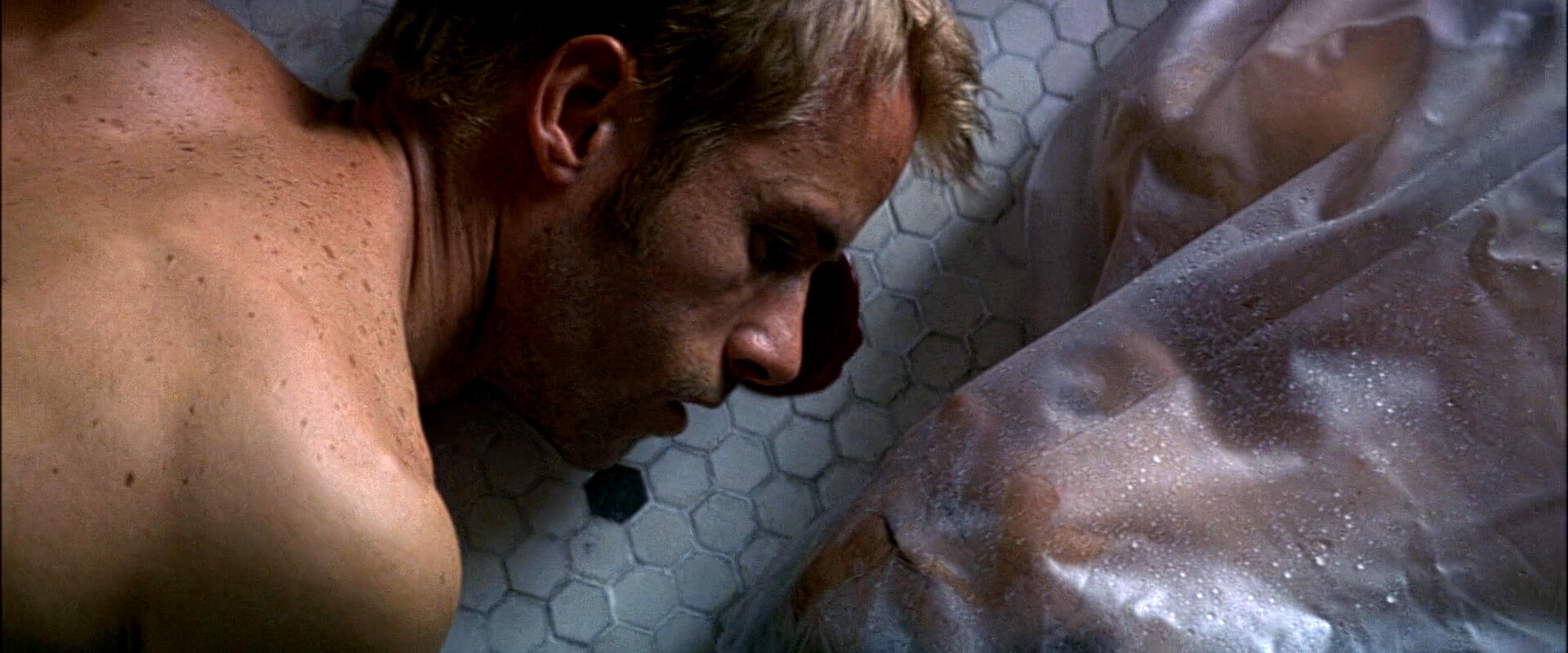
Leonard and his wife: Christopher Nolan themes
While the latent misogyny in many Nolan screenplays is something to avoid, the Dead Wife trope points to a larger tool that we can take away from Nolan’s scripts. Nolan’s protagonists’ dead wives create a hole that cannot be filled, and all of the aforementioned movies follow characters trying to fill a void.
It creates a compelling dissonance: we understand what these characters are trying to achieve, but we also know they can never achieve it.
A good protagonist is a protagonist with a good backstory. If we feel like a character has only started to exist at the beginning of the movie, that means the character doesn’t feel real, and neither will their motives.
By creating tragic backstories for his protagonists, Nolan creates characters who are flawed yet sympathetic, characters whose drives, unlike their wives, are undying.
Perhaps Nolan’s most successful use of the Dead Wife can be found in Inception. Here, Cobb’s wife, Mal, is given more humanity since she routinely shows up in Cobb’s (and others’) dreams.
Cobb is literally running from the memory of his wife. His relationship with Mal is complex, compelling, and illustrative of the dangers of his line of work.

Who wrote Inception? We need to check in on his wife
The dream nature of Inception's world allows Nolan to literalize Cobb’s obsessions and fears. Let’s take a look at the masterful scene between Cobb and his new acolyte, Ariadne.
Christopher Nolan themes in Inception • Read the Scene
Here, Ariadne has snuck into Cobb’s dream, where he relives memories of his and Mal’s life. We learn crucial information about their relationship, as well as Cobb’s motivating forces, and it’s all visualized; whereas in a different film this would all have to be expository dialogue, in Inception’s world the characters can literally walk through memories.
In this scene, we now understand why Cobb can’t give up dreaming: it’s all he has left of the love of his life. We also understand that Cobb’s relationship is filled with regrets and darkness, something that becomes more and more important as the film progresses and Mal continues to haunt him.
Furthermore, it is stressed just how dangerous the game is that Cobb is playing: “You said never to use memories.” “And I shouldn’t.” Cobb is like an addict, unable to control himself against his better judgement.
By structuring the scene through an elevator, Nolan makes physical the interior of Cobb’s character. The deeper they go, the more painful the memory.
Inception Elevator Scene
The Dead Wife in Inception is crucial to explaining the protagonists’ motives. Without the trope, Cobb’s decisions would seem unjustifiably reckless. With his Dead Wife past, the audience understands, empathizes, and is on board with whatever he decides to do next.
This tool doesn’t need to be reserved for just protagonists – think of Two Face in The Dark Knight (Dead Girlfriend = unquenchable thirst for revenge). By creating an insatiable character like Cobb, you can create impossibly high stakes, since your character will stop at nothing, including the impossible.
Related Posts
Christopher Nolan Writing Process
Think visually
Because his films are so visually striking, Christopher Nolan is often thought of as a director first and writer second. Even when his script is faltering, like that of Tenet, his knack for jaw-dropping set pieces makes nearly every scene an exciting watch.

Christopher Nolan script writing can get confused in Tenet
A visually compelling movie doesn’t start with the storyboard, however. With clear and economically descriptive writing, a screenwriter can illustrate powerful imagery in a script. Christopher Nolan does just this.
Let’s look at the script of one of the first scenes from one of Nolan’s most visually stunning films, Dunkirk.
How to write like Christopher Nolan
This much scene direction, especially this early in a script, would make a lot of studio executives balk. Christopher Nolan gets away with it for two reasons.
1) He’s Christopher Nolan in 2015, so he’s not worried about anyone putting down his script.
2) The scene direction is spaced out, not overly verbose, and packed with necessary information. One of these two reasons is helpful for when we write our own screenplays.
The most easily applicable takeaway from this scene is spacing: when writing a script, a paragraph of scene direction should not be longer than 4 lines. Nolan follows this rule, and not arbitrarily, each section flows into the other smoothly and with purpose.
Dunkirk Opening Scene
Let’s look at the first paragraph, a masterclass in packing information into your scene direction: “The longest, widest beach he’s ever seen, sunlight dazzling off the water, endless dark fences snaking across the sand and out into the water. Tommy squints — not fences, lines of men, hundreds of thousands of men…”
What do we learn here? First, it’s a fantastically vivid description, largely because of his strong verb choices: dazzling, snaking, squint — all immediately evoke an image in our mind.
This is where most of the film will take place, so it’s key for Nolan to clearly establish its look, while not slowing the pace of the script.
Second, we learn about Tommy. This is the “longest, widest beach he’s ever seen.” This establishes that he’s far from home, and gives an actor reading the script a hint at how to play this — awe, wonder, perhaps some fear.
The fences mislead is a fantastic way to describe what the lines of soldiers look like while also giving further direction for our actor: he’s taking in his surroundings, slowly coming to understand what’s going on. For a cinematographer reading this, too, it’s instructive – start wide, where soldiers could look like fences, get tighter to clarify.
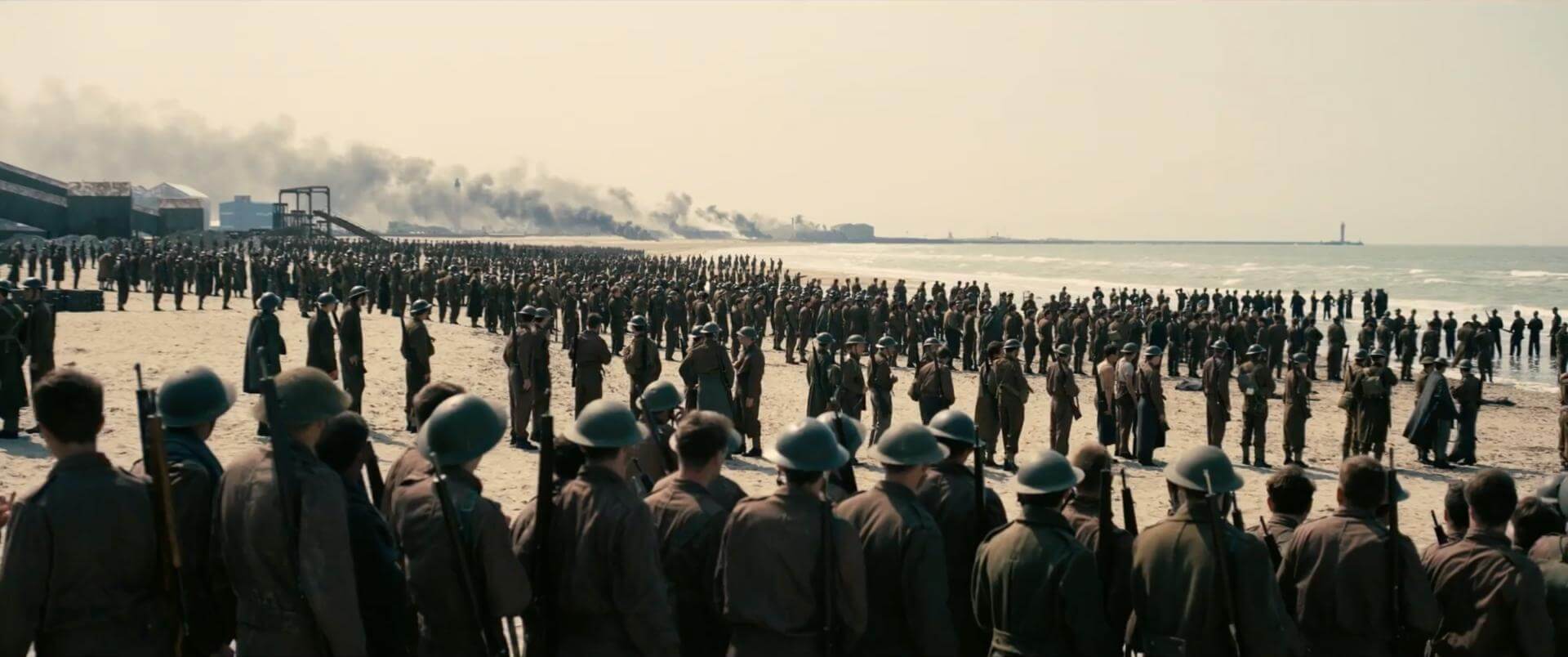
From script to screen: Christopher Nolan script writing
Each line in this introductory scene is crucial and telling. So don’t run away from scene direction, but make sure that when you have SD’s as lengthy as this, every word is crucial in helping the reader understand the look, feel, and motive of the scene.
The next time you’re watching a Christopher Nolan film, think about what each scene might look like on the page and why. Nolan’s imagery might be his calling card, but it wouldn’t be anywhere near as powerful without the innovative structure, adherence to genre, and clear character motivations imbued in his screenplays.
UP NEXT
Every Christopher Nolan movie, ranked
Want more Nolan? It’s okay, we all do. Check out our definitive ranking of all of the auteur’s films and pull your hair out that your favorite is too low and your least favorite is too high. It’s all a matter of opinion but… we’re right.

